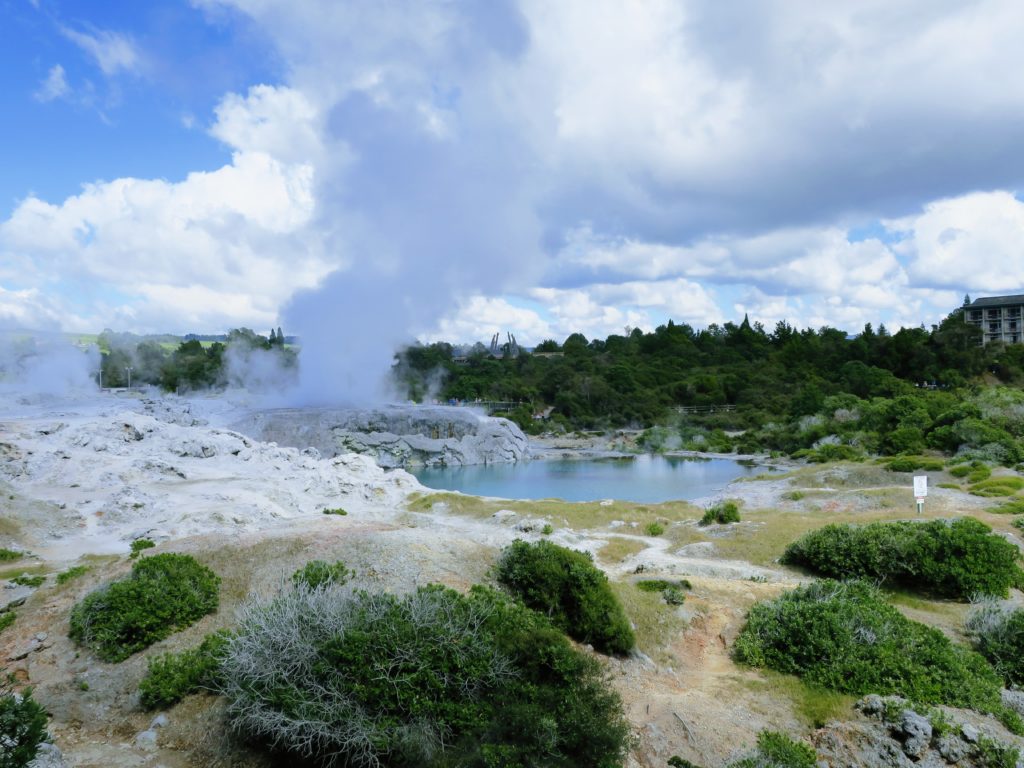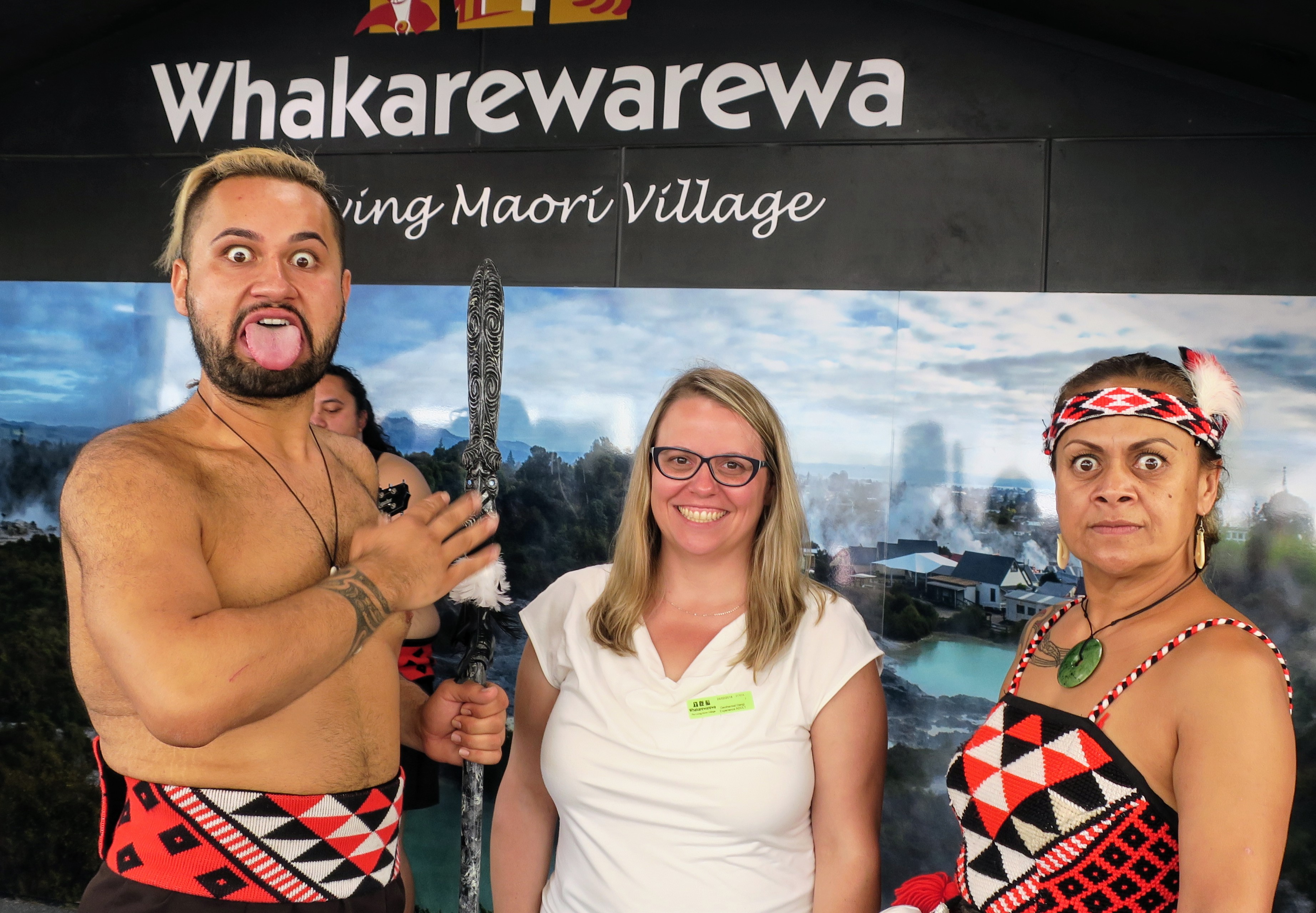Location: Rotorua, Bay of Plenty North Island, New Zealand
New Zealand’s first inhabitants were the Maori, seafarers from the eastern Polynesian islands. These indigenous tribes arrived around 1300 and their culture persists today. 15% of the New Zealand population is Maori; in Rotorua, 40% of the population is Maori. Hence, it is considered one of the hubs of Maori culture and the perfect place to discover the people and their heritage.
There are 3 “Maori experiences” in Rotorua. Two of them are what I consider tourist traps – the depict Maori life European settlement, put on a flashy show and charge a fortune. The third one, is an actual living village, where 40 Maori families still reside on the site their ancestors did centuries ago. I chose this one. Not only was the price beyond reasonable but I feel that I would gain a more authentic experience as opposed to a ‘Disneyland vibe”.

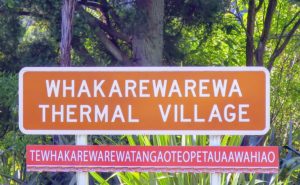 Te Whakarewarewatanga O Te Ope Taua A Wahiao is the name of the village…. try saying that tree times fast. Or better yet, try saying it once! Most people refer to the village by the shortened name of Whakarewarewa – in Maori language, “wh” is pronounced as “f” or “ph”. For those that continue to struggle with the name, the village can also be called “Whaka” – however, in this case, they pronounce it as a ‘w’ and not a ‘f’ sound…..
Te Whakarewarewatanga O Te Ope Taua A Wahiao is the name of the village…. try saying that tree times fast. Or better yet, try saying it once! Most people refer to the village by the shortened name of Whakarewarewa – in Maori language, “wh” is pronounced as “f” or “ph”. For those that continue to struggle with the name, the village can also be called “Whaka” – however, in this case, they pronounce it as a ‘w’ and not a ‘f’ sound…..
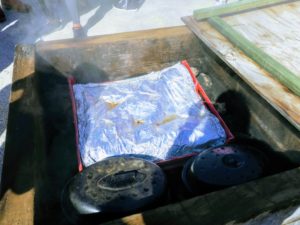
Whakarewarewa is considered a thermal village; the Maori use nature in their tasks of daily life (would make ADLs more interesting for my OT friends). They cook their meals via a unique twist on the traditional ‘hangi’ method. Typically, a hangi is a method that cooks food using heated rocks buried in a pit. In Whaka, they’ve created steam boxes by harnessing the power of the escaping steam from the earth. Food cooks much faster and as it is a dry heat, they can even wrap the items in plastic! Several families can also cook at once, making feasts that much easier to prepare!
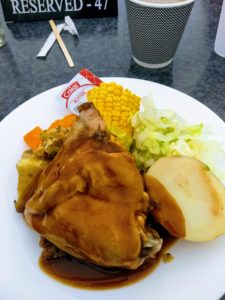
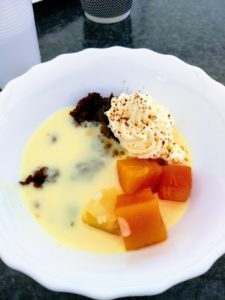
The end result: a wonderfully delicious hangi! Even the bread pudding was cooked in the earth
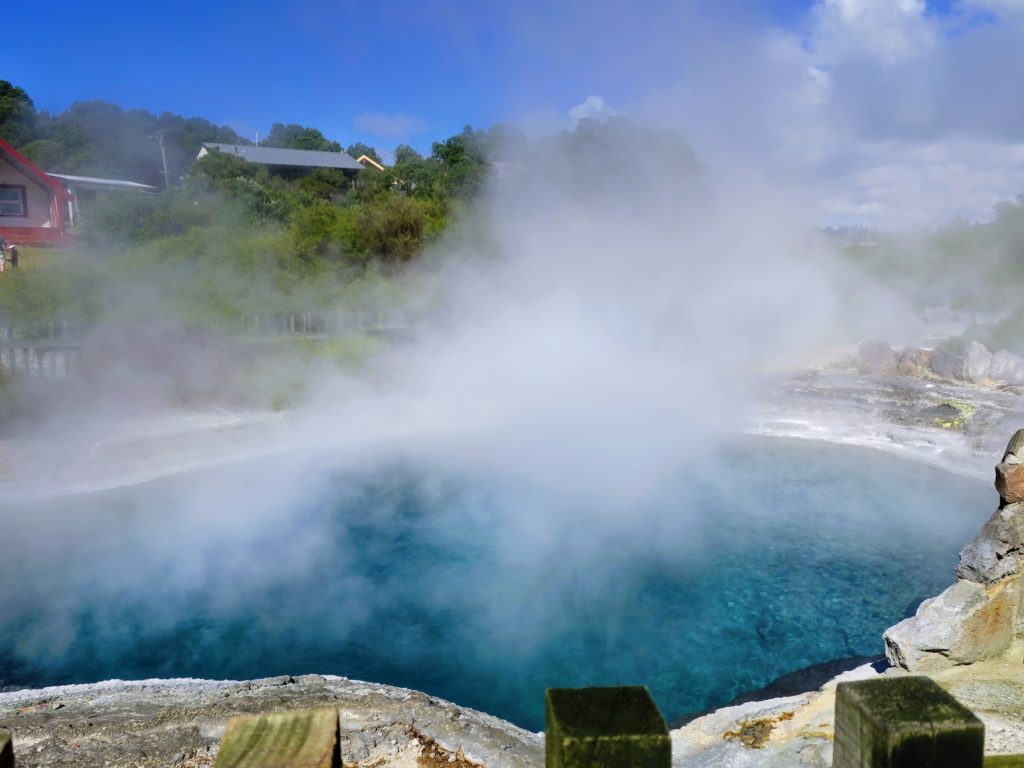
The villagers of Whaka also use the area’s geothermal activity for their bathing. Water from this natural hot spring is channeled to individual outdoor baths. The water consistency is thicker then usual, due to the presence of minerals. In Rotorua centre, you pay 30$ at a spa to bathe in these therapeutic waters, here villages use them daily! Its said to have wonderful effects on the skin.
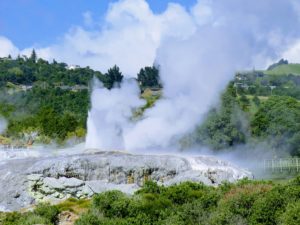 The village is also well-known for its geyser: Pohutu. At one point in recent history, the geyser was drastically affected by the draining of the heated water by surrounding hotels and homes as a heating method. In the late 80’s, many of these accesses were shut down and the geyser regained its full strength. It’s a bit hard to see in the photo, but there are actually 2 geysers erupting side by side. The steam and spray makes it difficult to distinguish with the water jet. The Maori of Whaka have a great respect for the land and its natural life giving properties and have fought the government over the years in order to continue protecting the area,
The village is also well-known for its geyser: Pohutu. At one point in recent history, the geyser was drastically affected by the draining of the heated water by surrounding hotels and homes as a heating method. In the late 80’s, many of these accesses were shut down and the geyser regained its full strength. It’s a bit hard to see in the photo, but there are actually 2 geysers erupting side by side. The steam and spray makes it difficult to distinguish with the water jet. The Maori of Whaka have a great respect for the land and its natural life giving properties and have fought the government over the years in order to continue protecting the area,
After the tour of the village, the day ended with a cultural show, where traditional Maori dances and song were showcased. And of course, the infamous haka was performed!
A haka is a traditional war cry or dance, performed by warriors before battle. It was also performed for distinguished guests and special occasions. The haka is recognized worldwide for its vigorous movements, stamping of the feet and bulging eyes with protruded tongues. Imagining a group of hundreds of warriors performing a haka is terrifying , however intimidation was not the only reason for their exaggerated movements. Warriors used it as a way to warm up all their muscles before a fight, eyes and tongue included.
A great day spent at Whakarewarewa, the living village learning about Maori culture which is rich and fascinating as well as taking in the wondrous power of nature. 